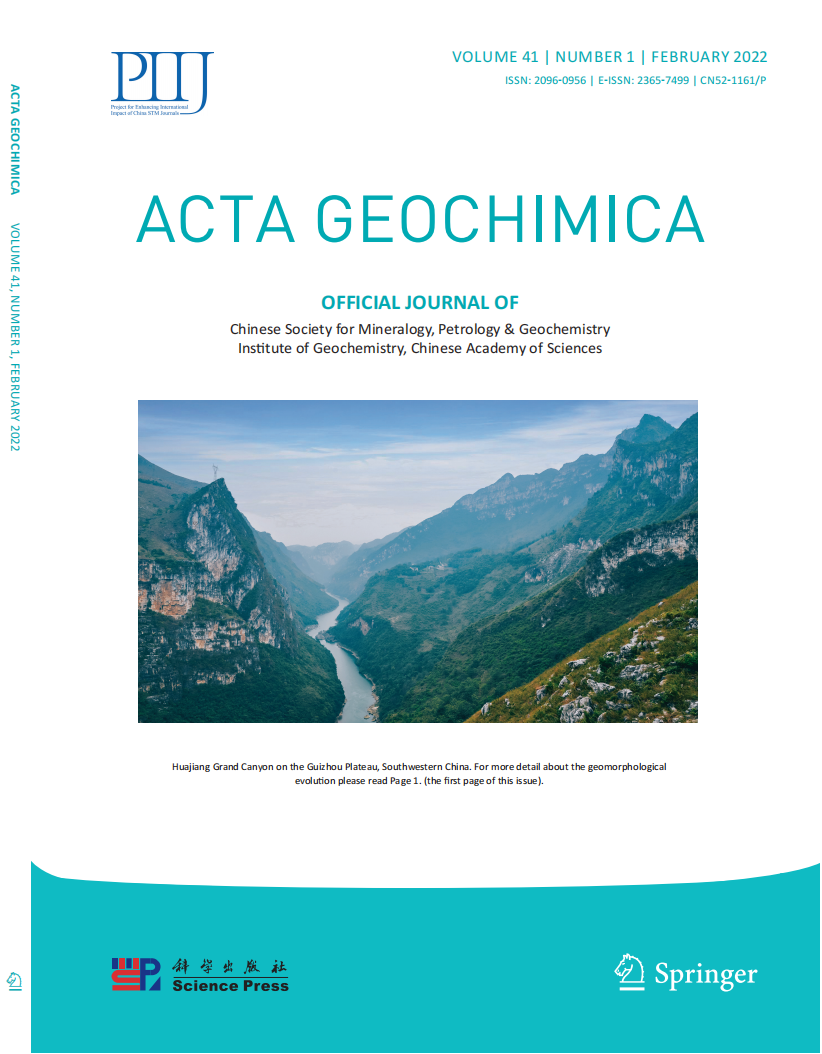- 钛学术文献服务平台 \
- 学术期刊 \
- 基础科学期刊 \
- 化学期刊 \
- 地球化学学报(英文)期刊 \
Trace element partitioning between amphibole and hydrous silicate glasses at 0.6–2.6 GPa
Trace element partitioning between amphibole and hydrous silicate glasses at 0.6–2.6 GPa
原文服务方:
地球化学学报(英文)
摘要:
Partitioning behavior between amphibole and silicate glass of thirty-three minor and trace elements (Sc, Ti, V, Cr, Co, Rb, Sr, P, Y, Zr, Nb, Cs, Ba, K, La, Ce, Pr, Nd, Sm, Eu, Gd, Tb, Dy, Ho, Er, Tm, Yb, Lu, Hf, Ta, Pb, Th, and U) have been determined experimentally. Products of crystallization of hydrous basalt melts from 0.6 GPa/860℃ up to 2.6 GPa/970℃ were obtained in a multianvil apparatus. Major and trace element compositions of amphibole and glass were determined with a combination of electron microprobe and laser ablation inductively coupled plasma mass spectrometry. The main mineral phase is calcic amphibole, and the coexisting glass compositions are tonalite, granodiorite, and granite. The compatibility of rare earth elements increase at 915℃ and then decrease at 970℃, but the compatibility of most of these elements shows a continued, significant increase with increasing pressure. For high-field strength elements, large ion lithophile elements, actinide compatibility decrease with increasing temperature or pressure, but transition metals show a continued increase in compatibility within the temperature–pressure conditions. From mathematical and graphical fitting, we determined best-fit values for the ideal ionic radius (r0, 1.01–1.04 Å ), the strain-free partition coefficient (D0, 1.18–1.58), and apparent Young's modulus (E, 142–370 GPa) for the M4 site in amphibole according to the lattice strain model. The D0M4 for rare earth elements rises at 915℃ and then drops at 970℃ at 0.6 GPa. However, the D0M4 values are positively proportional to the pressure for rare earth elements in the amphibole-glass pairs at 0.6–2.6 GPa and 970℃. Furthermore, the derived best-fit values for r0M4 and EM4 are almost constant and trend to increase with rising temperature and pressure, respectively. The partition coefficient is distinctly different for different melt compositions. The rare earth elements become more enriched in amphibole if the quenched glass is granodiorite o

推荐文章
The partitioning patterns of nutrients between pods and seeds of Zanthoxylum fruits impacted by envi
Partitioning pattern
Nutritional quality
C:N ratio
Zanthoxylum fruits
Mean annual temperature
Mean annual precipitation
Theoretical calculation of equilibrium Mg isotope fractionation between silicate melt and its vapor
Equilibrium Mg isotope fractionation
Force constant
Structural optimization
RPFR
Trace element composition of magnetite from the Xinqiao Fe–S(–Cu–Au) deposit, Tongling, Eastern Chin
Xinqiao
Skarn
Magnetite
In-situ analysis
Tongling
Variations of trace elements under hydrological conditions in the Min River, Eastern Tibetan Plateau
Trace elements
Concentration-discharge relationship
Tibetan Plateau
River
内容分析
关键词云
关键词热度
相关文献总数
(/次)
(/年)
文献信息
| 篇名 | Trace element partitioning between amphibole and hydrous silicate glasses at 0.6–2.6 GPa | ||
| 来源期刊 | 地球化学学报(英文) | 学科 | |
| 关键词 | Amphibole Silicate glass Trace elements Partition coefficients Lattice strain model | ||
| 年,卷(期) | 2019,(3) | 所属期刊栏目 | |
| 研究方向 | 页码范围 | 414-249 | |
| 页数 | -165页 | 分类号 | |
| 字数 | 语种 | 英文 | |
| DOI | 10.1007/s11631-019-00322-4 | ||
五维指标
版权信息
全文
- 全文.pdf
引文网络
引文网络
二级参考文献 (0)
共引文献 (0)
参考文献 (0)
节点文献
引证文献 (0)
同被引文献 (0)
二级引证文献 (0)
2022(0)
- 参考文献(0)
- 二级参考文献(0)
- 引证文献(0)
- 二级引证文献(0)
研究主题发展历程
节点文献
Amphibole
Silicate glass
Trace elements
Partition coefficients
Lattice strain model
研究起点
研究来源
研究分支
研究去脉
引文网络交叉学科
相关学者/机构
期刊影响力
地球化学学报(英文)
主办单位:
中国科学院地球化学研究所
出版周期:
双月刊
ISSN:
2096-0956
CN:
52-1161/P
开本:
大16开
出版地:
贵州省贵阳市观水路46号地球化学研究所
邮发代号:
创刊时间:
1982-01-03
语种:
英文
出版文献量(篇)
294
总下载数(次)
0
期刊文献
相关文献
推荐文献

 免费查重
免费查重










